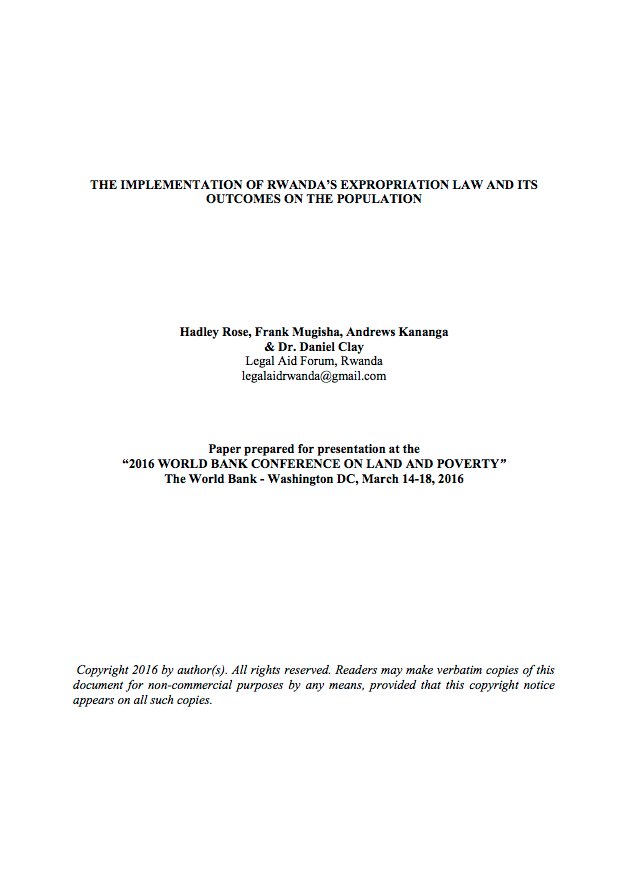The Implementation of Rwanda’s Expropriation Law and Outcomes on the Population
Resource information
Date of publication
Juillet 2015
Resource Language
ISBN / Resource ID
Rwanda LAND (Research) - 50
Copyright details
Chemonics
Rwanda is developing at a remarkably rapid pace, and with that development has come a multitude of corresponding changes to the orientation and use of land throughout the country. In light of these changes, law n°18/2007 of 19/04/2007 relating to expropriation in the public interest was adopted to provide clear procedures for the government to follow in the taking of privately-owned land for other uses deemed to be in the public interest. The two major themes of the research are: 1) the implementation of the law from the procedural perspective; and 2) assessing the effects of expropriation law and policy on expropriated households.

